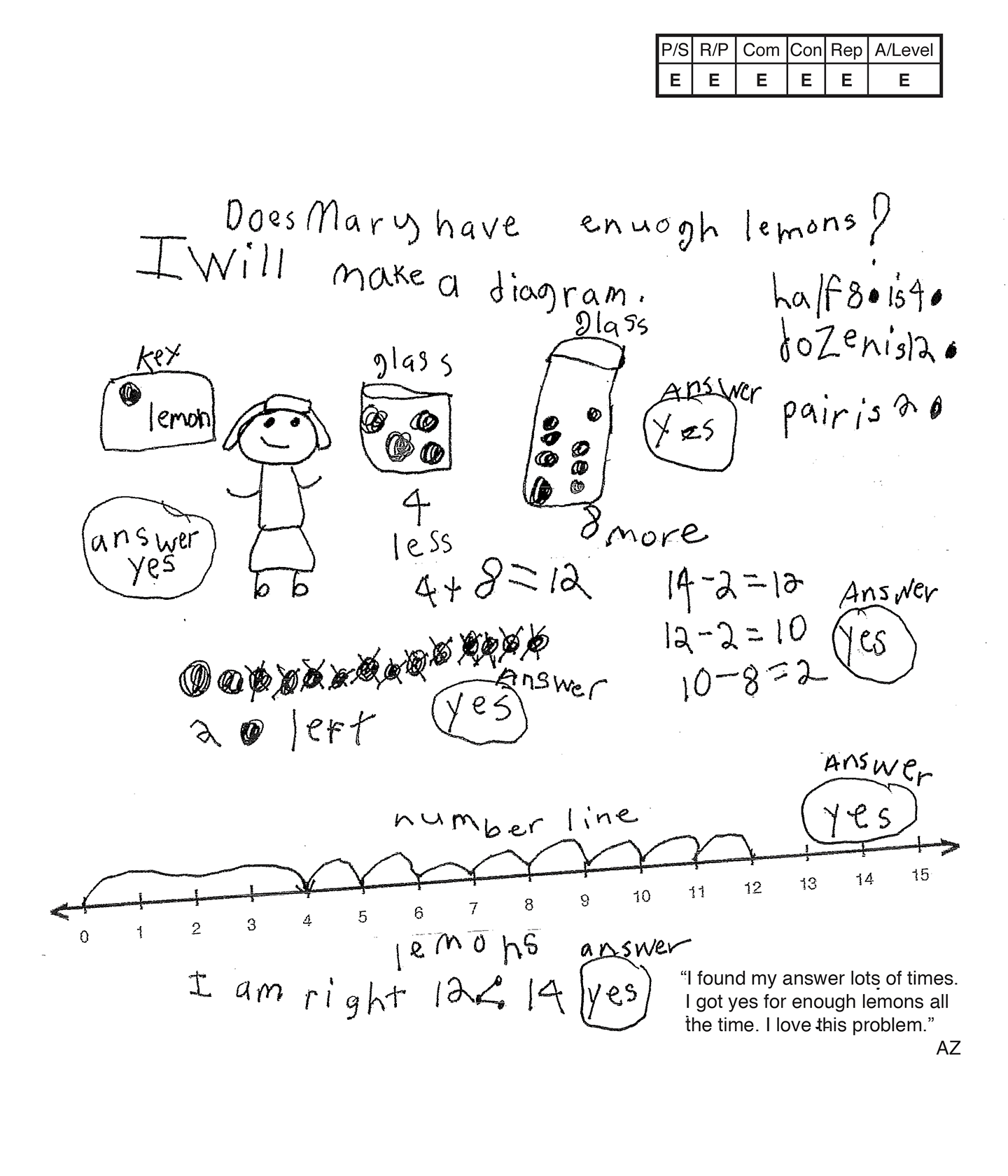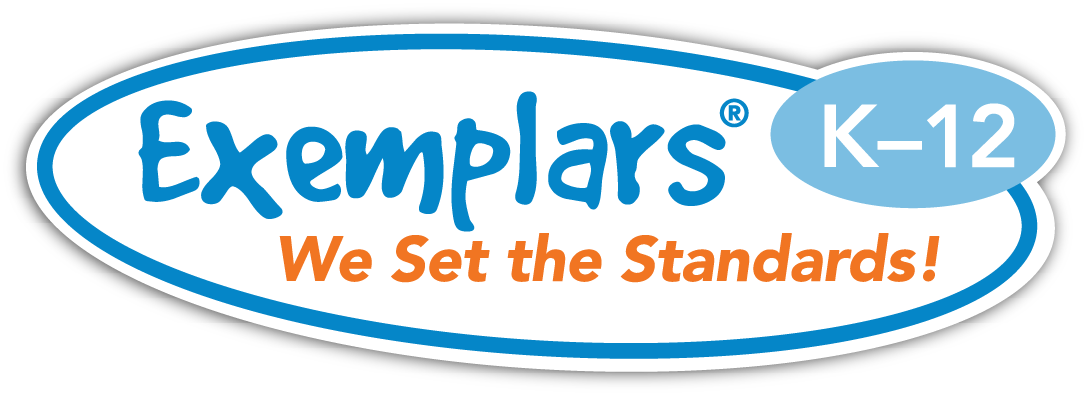
The student's strategy of using a diagram of four lemons for a small glass and eight lemons for a large glass to find a total of twelve lemons to compare to fourteen lemons works to solve the task. The student's answer, "Yes," is correct. The student verifies her/his answer by using more strategies. The student also brings the concept of half to the problem.
The student shows correct reasoning of the underlying concepts of the task. The student demonstrates understanding of four lemons to one glass, eight lemons to one glass, finding the total number of lemons needed using addition, and comparing that total to fourteen lemons. The student uses conceptual understanding of subtraction and less than to verify her/his answer is correct.
The student correctly uses the mathematical terms diagram, key, half, dozen, pair, more, less, number line. The student correctly uses the mathematical notation "<".
The student makes the mathematically relevant Practitioner observations, "dozen is 12," "pair is 2 [lemons]," "4-more," "8-less," and, "2 [lemons] left." The student makes the Expert observations, "half 8 [lemons] is 4 [lemons]," and, "12 < 14." The student verifies her/his answer by using a second diagram to count back four and eight lemons, subtraction equations to show the two remaining lemons, a number line using an addition jump of four lemons and then eight individual lemons for a total of twelve lemons. The student states, "I found my answer lots of times. I got yes for enough lemons all the time." The student writes, "I am right."
The student's first and second diagrams are appropriate to the task and accurate. All labels are provided and a key defines the lemons. The student's number line is also appropriate and accurate with all labels included. The student links the representation to verify that her is answer is correct.

